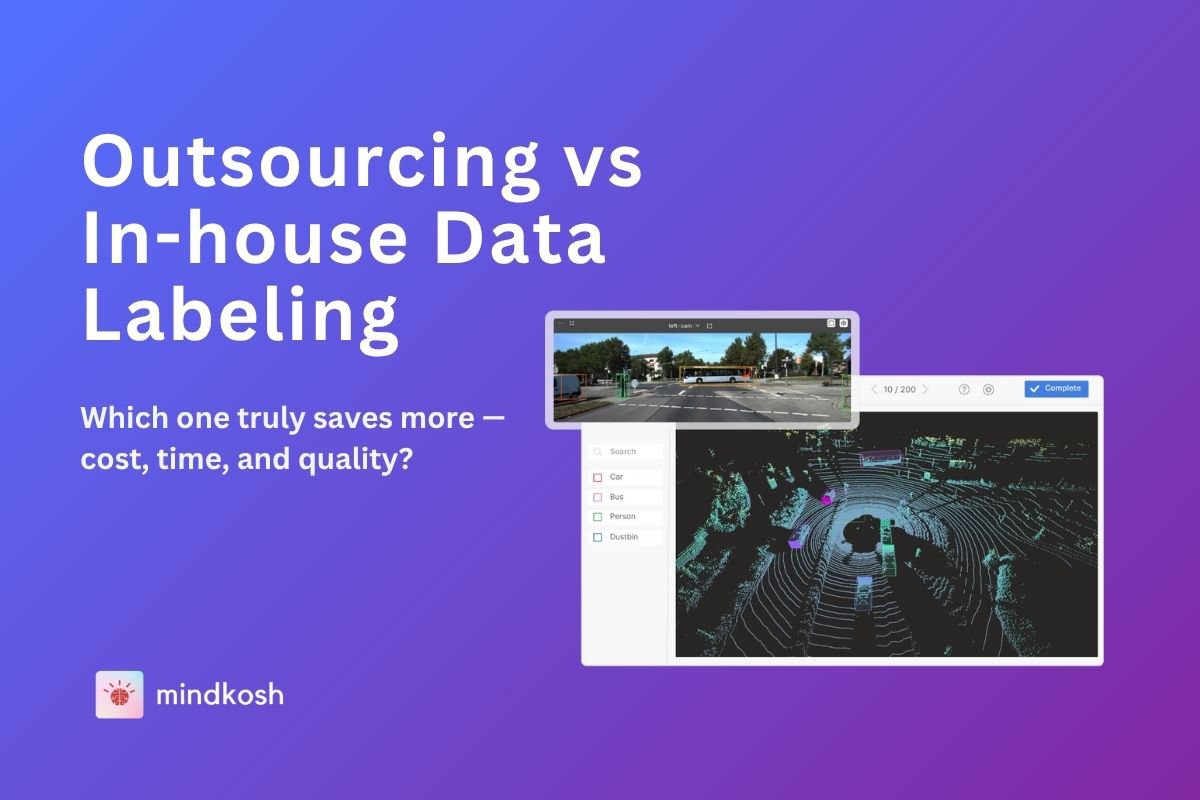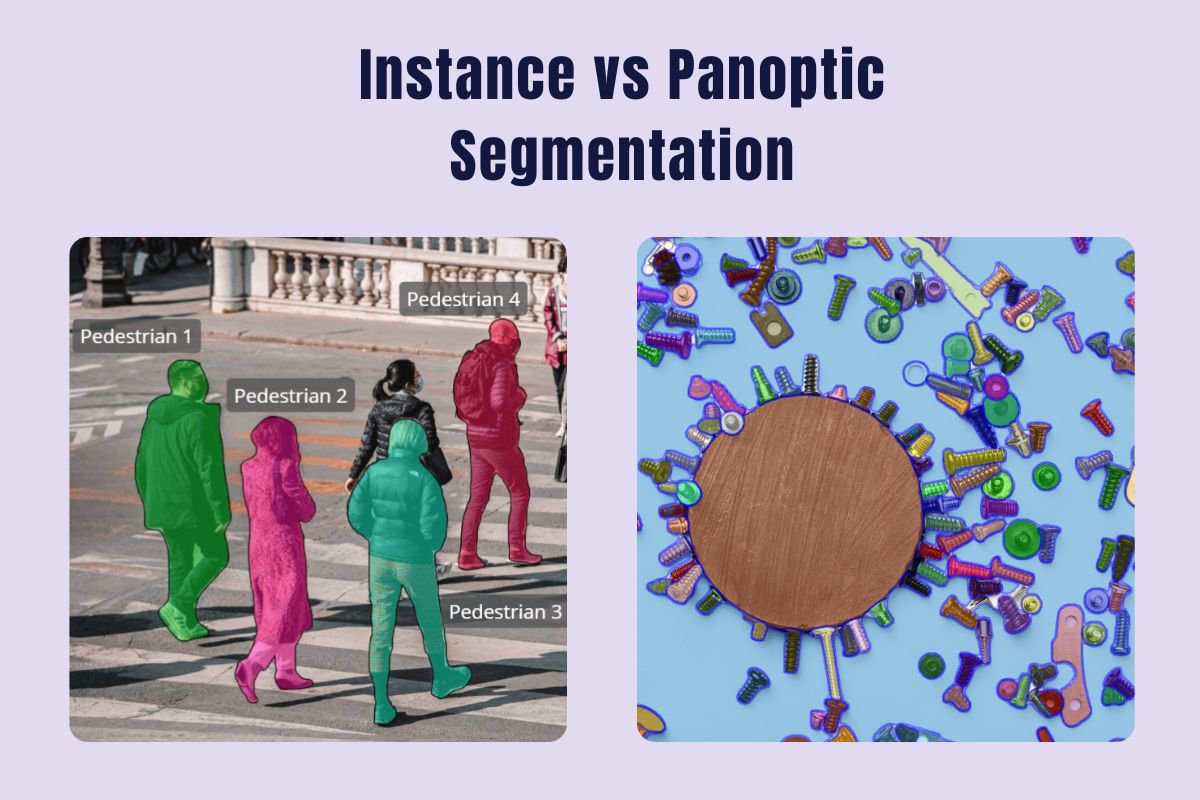
Image segmentation plays a pivotal role in Computer Vision to understand and interpret visual data. Two prominent techniques within segmentation are Instance segmentation and Panoptic segmentation. While they both aim to partition an image into meaningful segments, they serve different purposes and have distinct methodologies. In this blog post, we'll discuss the concepts of instance and panoptic segmentation, explore their differences, discuss implementation methods, and highlight their practical applications through various use cases.
What is Instance Segmentation?
Instance segmentation is a technique in Computer Vision that involves identifying and delineating individual objects within an image. Unlike semantic segmentation, which groups pixels into categories without distinguishing between separate instances, instance segmentation aims to differentiate each object instance present in the image. Each identified object is assigned a unique label, enabling precise localization and separation.
For Instance segmentation, not only is it necessary to classify pixels into specific categories, but it's also crucial to differentiate between instances of the same category. This finer level of granularity makes instance segmentation particularly useful in scenarios where objects overlap or occur in close proximity.
What is Panoptic Segmentation?
Panoptic segmentation combines both instance segmentation and semantic segmentation into a unified framework. It seeks to provide a comprehensive understanding of an image by not only identifying individual object instances but also assigning a semantic label to every pixel in the image, including those not belonging to any discernible object.
In essence, panoptic segmentation addresses the challenge of simultaneously recognizing objects and understanding the context in which they exist within the scene. It aims to bridge the gap between instance-level and semantic-level segmentation, offering a holistic interpretation of visual data.
Key difference between instance and panoptic segmentation
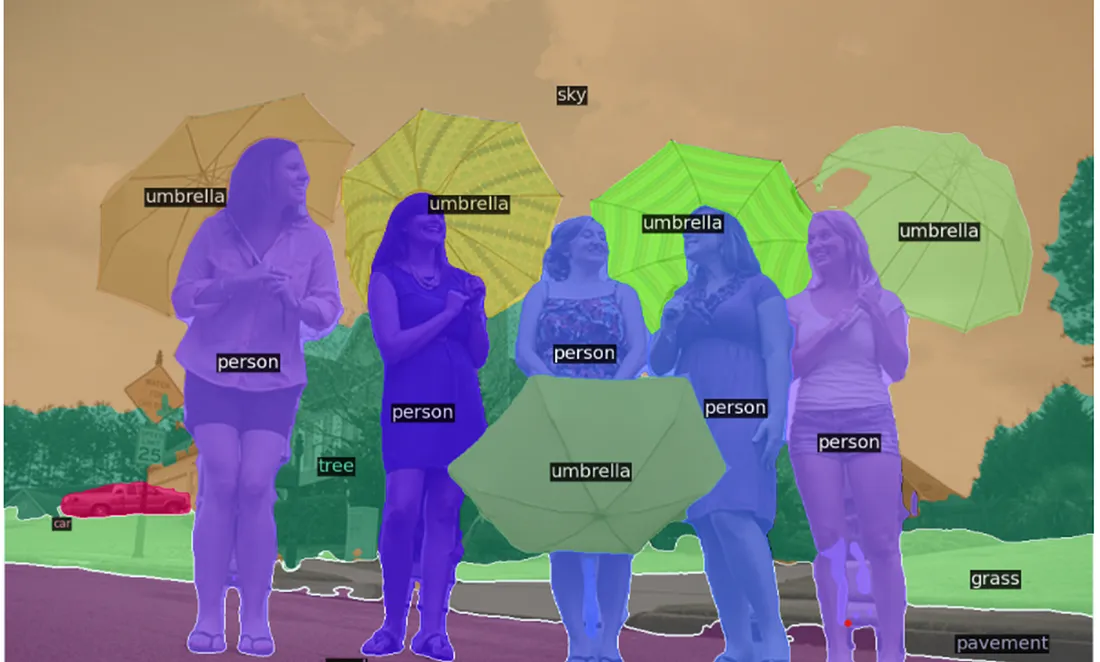
While both instance segmentation and panoptic segmentation are techniques used in computer vision for image segmentation, they differ significantly in their objectives, methodologies, and the level of information they provide.
Instance Segmentation:
Instance segmentation aims to identify and delineate individual object instances within an image. The primary goal is to precisely outline each object instance present in the scene, providing not only the class label but also a unique identifier for each instance. This level of granularity enables applications where accurate localization and separation of objects are crucial, such as in autonomous driving, robotics, and medical imaging.
In instance segmentation, the focus is on differentiating between objects of the same class and accurately capturing their boundaries, even when they overlap or occlude each other. This is achieved through techniques like Mask R-CNN (Region-based Convolutional Neural Networks), which extend traditional object detection architectures to simultaneously predict object bounding boxes and segmentation masks for each detected object instance.
Panoptic Segmentation:
Panoptic segmentation, on the other hand, goes beyond instance-level segmentation to provide a more comprehensive understanding of the scene. In addition to identifying individual object instances, panoptic segmentation assigns semantic labels to all pixels in the image, including those that do not belong to any discernible object. This means that every pixel in the image is labeled either with a category label (e.g., "car," "person," "building") or with an "unlabeled" label if it does not belong to any recognized object class.
Panoptic segmentation combines the strengths of both instance segmentation and semantic segmentation, offering a unified framework for scene understanding. By capturing the semantic context in which objects exist within the scene, panoptic segmentation facilitates higher-level reasoning tasks, such as scene analysis, object interaction prediction, and context-aware decision-making.
Key Differences:
- Granularity of Segmentation: Instance segmentation provides a detailed delineation of individual object instances, including precise boundaries and unique identifiers. In contrast, panoptic segmentation focuses on labeling all pixels in the image with semantic categories, providing a broader understanding of the scene but without distinguishing between individual instances of the same class.
- Semantic Context: Panoptic segmentation incorporates semantic segmentation by assigning labels to all pixels, including those outside the boundaries of recognized object instances. This contextual information enhances scene understanding and facilitates higher-level reasoning tasks.
- Applications: While instance segmentation is well-suited for tasks that require precise object localization and separation, such as object detection and tracking, panoptic segmentation finds applications in scenarios where a comprehensive understanding of the scene is necessary, such as in augmented reality, urban planning, and environmental monitoring.
Techniques to perform image segmentation
Both instance segmentation and panoptic segmentation rely on deep learning techniques, particularly convolutional neural networks (CNNs), to achieve accurate segmentation results. While a detailed technical discussion of CNN architectures is beyond the scope of this blog post, it's essential to understand the general workflow:
- Data Preparation: The first step involves collecting and preprocessing a labeled dataset comprising images and corresponding ground-truth segmentation masks.
- Model Training: A CNN architecture, such as Mask R-CNN for instance segmentation or Panoptic FPN for panoptic segmentation, is trained on the annotated dataset using techniques like transfer learning or end-to-end training.
- Inference: Once trained, the model can perform inference on new images, segmenting them into instance masks or producing panoptic segmentation outputs, depending on the task at hand.
Uses and Example Use Cases
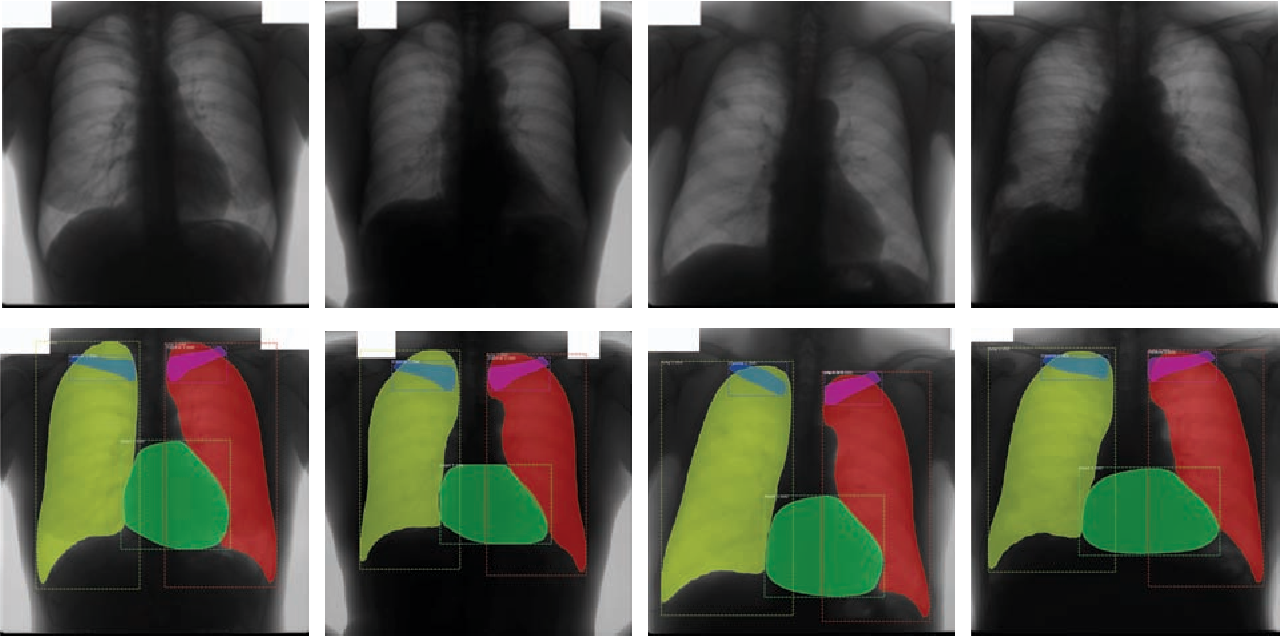
Instance and panoptic segmentation find applications across various domains, including autonomous driving, medical imaging, retail analytics, and more. Here are some example use cases illustrating their practical significance:
Instance Segmentation:
- Object Detection and Tracking: In autonomous driving systems, instance segmentation enables the detection and tracking of vehicles, pedestrians, and other objects on the road, facilitating safe navigation and collision avoidance.
- Medical Imaging: Instance segmentation aids in medical image analysis by accurately delineating anatomical structures such as organs, tumors, and lesions, assisting radiologists in diagnosis and treatment planning.
- Retail Analytics: In retail environments, instance segmentation can be utilized for customer tracking and behavior analysis, enabling businesses to optimize store layouts and enhance customer experience.
Panoptic Segmentation:
- Scene Understanding: Panoptic segmentation provides a comprehensive understanding of complex scenes by not only identifying objects but also capturing the semantic context in which they exist. This is valuable in applications such as urban planning and environmental monitoring.
- Augmented Reality: Panoptic segmentation can be leveraged in augmented reality (AR) applications to overlay virtual objects seamlessly onto real-world scenes, enhancing user immersion and interaction.
- Cultural Heritage Preservation: In the field of cultural heritage preservation, panoptic segmentation can aid in the documentation and conservation of historical sites and artifacts by capturing detailed semantic information about the surroundings.
While both these segmentation techniques offer significant advantages, annotating datasets for them can be a complex, time consuming task. A good annotation tool built to handle these use-cases can be extremely useful and can be the difference between a successful and an unsuccessful AI project. The Mindkosh annotation tool is built to handle both Instance and panoptic segmentation with features like multi-layer masking, quick preview, easy exports and our automatic segmentation tool called Magic Segment. You can learn more about them here.
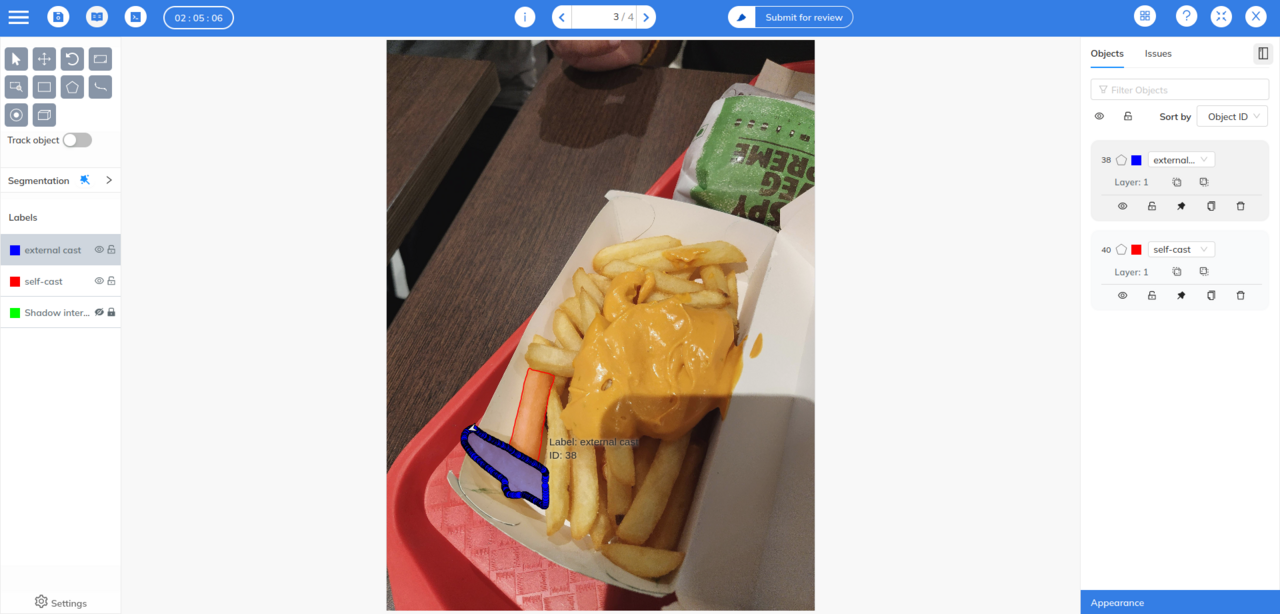
In essence, Instance segmentation and Panoptic segmentation are both powerful techniques in image analysis, each with its unique strengths and applications. While instance segmentation focuses on precise object delineation, panoptic segmentation offers a more holistic understanding of visual scenes. By harnessing the capabilities of deep learning and CNN architectures, these segmentation methods continue to drive advancements in various fields, paving the way for new possibilities in computer vision and beyond.
Sources:


